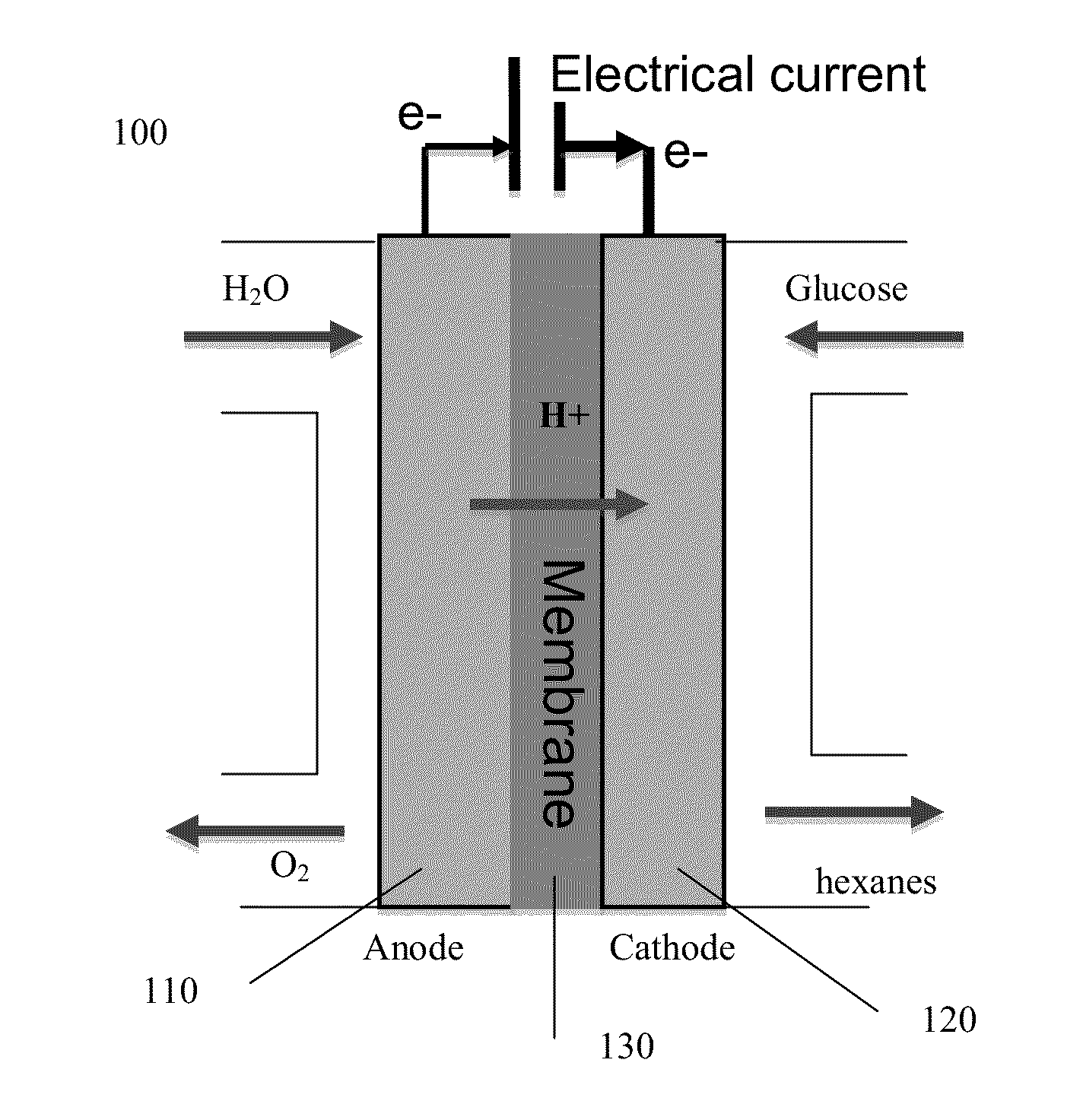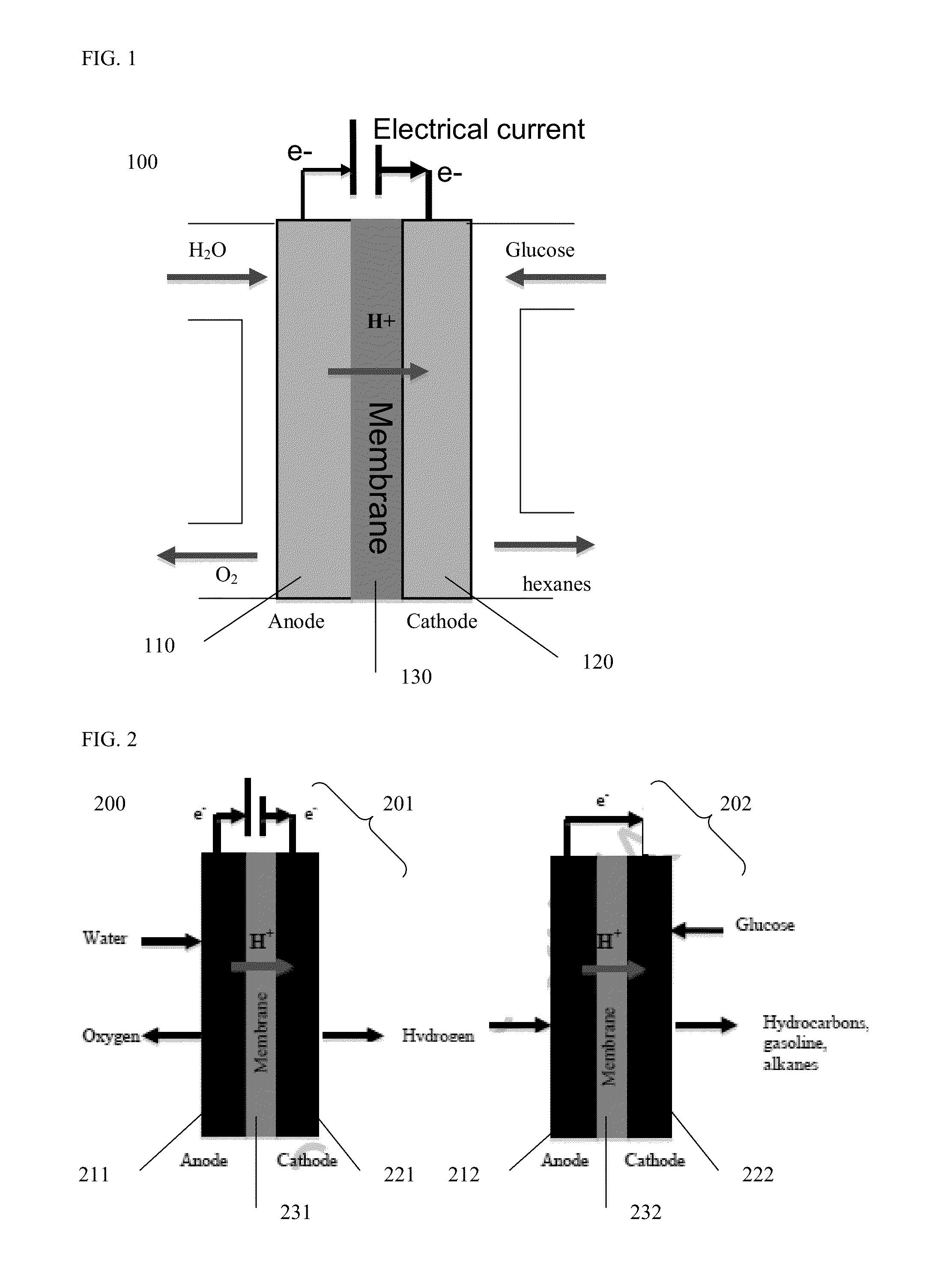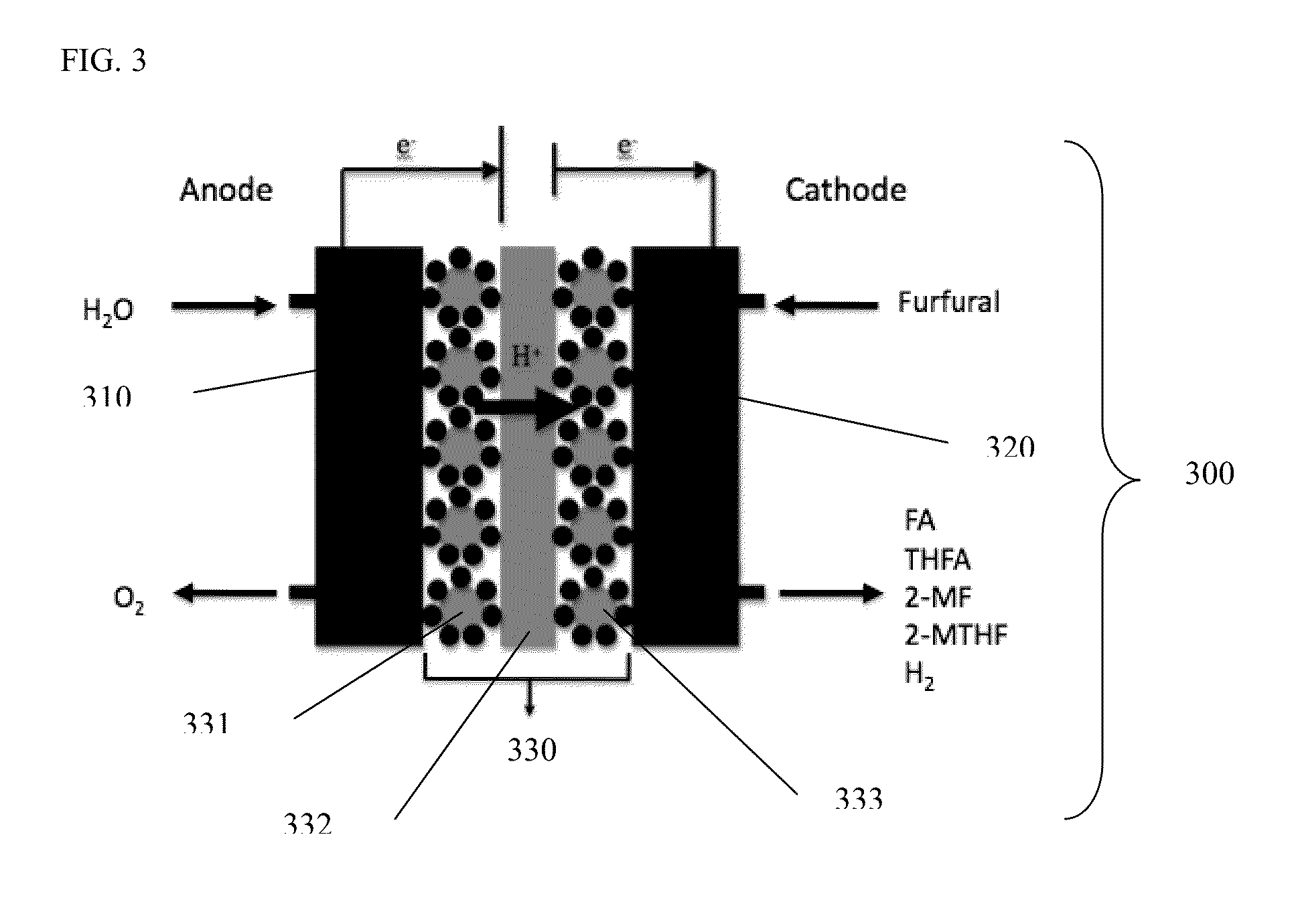Method of producing hydrocarbons using a fuel cell, and fuel storage system comprising the fuel cell
a fuel cell and hydrocarbon technology, applied in the direction of electrochemical generators, electrolytic organic production, instruments, etc., can solve the problems of high energy density, size, weight, energy storage using efficient and high energy density media, etc., to reduce water-soluble carbohydrate, reduce energy consumption, and reduce the effect of carbohydra
- Summary
- Abstract
- Description
- Claims
- Application Information
AI Technical Summary
Benefits of technology
Problems solved by technology
Method used
Image
Examples
Embodiment Construction
[0027]Disclosed herein is a method of electrocatalytically producing a hydrocarbon fuel from a sugar feedstock. The sugar feedstock is electrocatalytically reduced at the cathode of a fuel cell, coated with a catalyst to effect reduction of the sugars using a proton source provided by the anode, to provide as a storable energy medium a hydrocarbon fuel composition in a cost and space-efficient, combustible form, for later used.
[0028]The method includes electrocatalytically reducing a proton source, such as water, an alcohol, or hydrogen, to protons which are transferred across a polymer electrolyte membrane to the cathode of the fuel cell, and effecting reduction of a low- cost, readily available polyol feedstock such as a simple sugar (e.g., glucose or fructose). The reaction produces a recyclable stream of a carrier fluid (e.g., water) and a fuel composition (e.g., hexanes).
[0029]The method of producing a hydrocarbon includes providing electrical energy to a first fuel cell compri...
PUM
| Property | Measurement | Unit |
|---|---|---|
| temperature | aaaaa | aaaaa |
| octane number | aaaaa | aaaaa |
| temperature | aaaaa | aaaaa |
Abstract
Description
Claims
Application Information
 Login to View More
Login to View More - R&D
- Intellectual Property
- Life Sciences
- Materials
- Tech Scout
- Unparalleled Data Quality
- Higher Quality Content
- 60% Fewer Hallucinations
Browse by: Latest US Patents, China's latest patents, Technical Efficacy Thesaurus, Application Domain, Technology Topic, Popular Technical Reports.
© 2025 PatSnap. All rights reserved.Legal|Privacy policy|Modern Slavery Act Transparency Statement|Sitemap|About US| Contact US: help@patsnap.com



